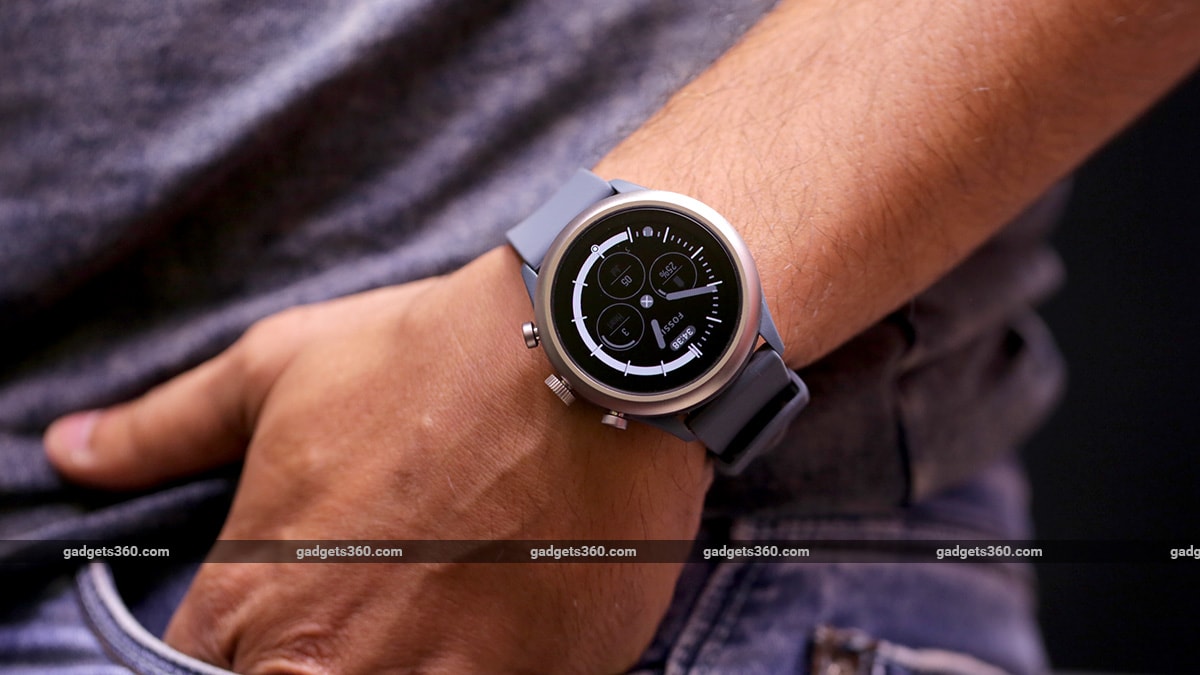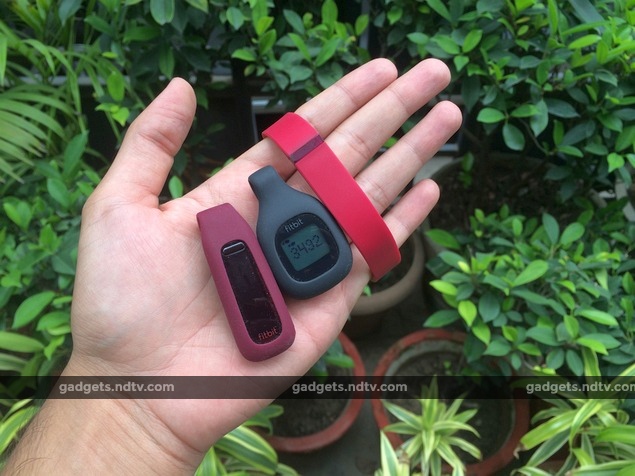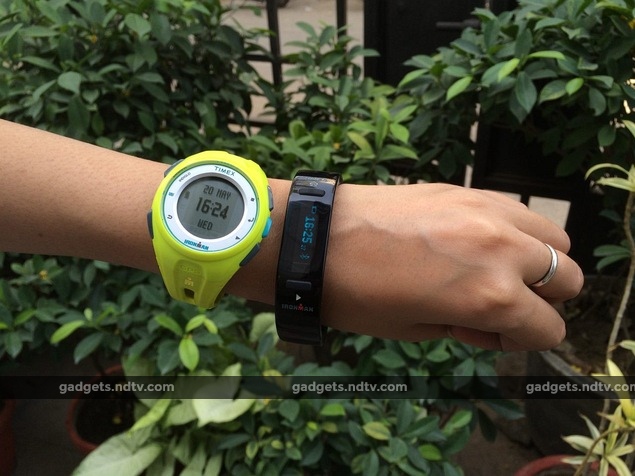Fossil is a well-known name when it comes to watches, but for the past several years, it’s also been one of the few traditional watch manufactures to consistently launch smartwatches based on Google’s Wear OS platform. The company’s latest model in India is the Fossil Sport, and one of the reasons we’re excited about it is that it’s among the first smartwatches to feature Qualcomm’s updated Snapdragon Wear 3100 processor. This is the long-awaited successor to the Snapdragon Wear 2100, which was the only real option manufacturers had till now.
Now this isn’t exactly brand new tech; Qualcomm launched the Snapdragon Wear 3100 nearly a year ago, but it has only just made its way to India. The same goes for the Fossil Sport. Nevertheless, it’s here now and we’re eager to try it out. Qualcomm’s previous smartwatch SoC has long been considered a performance bottleneck for Wear OS watches, and we’re hoping this new chip changes things for the better.
The Fossil Sport is priced at Rs. 17,995 and is available in a variety of colours. It’s also supposed to be swim-proof and has heart-rate tracking as well as built-in GPS. Let’s see if it’s worth the asking price, and whether Qualcomm’s new chip can make Wear OS easier to live with.
Fossil Sport design and features
The Fossil Sport uses a classic design, with a round dial and three buttons on the right, just like a traditional watch. The centre button is also a functional crown, which can be used for scrolling through menus or adjusting volume. The other two buttons can be customised to launch any app on the watch.
![]() The Fossil Sport is light and looks good on your wrist
The Fossil Sport is light and looks good on your wrist
The Fossil Sport is available in 43mm and 41mm sizes, with both priced the same. We have the former for review, which should be well suited for most wrists. The 41mm watch face is smaller and the straps are narrower too. The upper portion of the watch itself is made of aluminium, while the lower half is nylon plastic.
The watch is very light, and the silicone strap is also comfortable and easy to clean. However, on the whole, the Fossil Sport has a toy-like quality to it, which misses out on a premium feel. We noticed some rough edges on the nylon bottom of the case, which made it feel a little crude.
The 1.2-inch OLED display on the Fossil Sport looks sharp, and brightness is automatically adjusted based on ambient light. Even under sunlight, the display is easily legible. The 22mm straps are removable and you can swap them out for different ones if you want. The bottom of the watch also has a magnetic ring for the charging pod. This makes it very easy to snap the charger on and off, without having to align the charging pins to a specific spot.
Overall, the Fossil Sport is a comfortable smartwatch to wear, thanks to its low weight. It also looks smart from afar but feels a little plasticky on your wrist.
Coming to some of the specifications, the Sport runs on the Snapdragon Wear 3100 platform and has 4GB of internal storage. It runs Wear OS by Google, and packs in sensors such as an accelerometer, altimeter, ambient light sensor, gyroscope, and a heart-rate sensor. It also has NFC and built-in GPS along with Wi-Fi 802.11b/g/n and Bluetooth 4.2 Low Energy. There is a microphone for picking up voice commands, but there’s no speaker.
Lastly, the Sport is compatible with Android (except for Android Go Editions) and iOS smartphones, and requires the Wear OS app.
![]() The 22mm straps are removable on the Fossil Sport
The 22mm straps are removable on the Fossil Sport
Fossil Sport performance and battery life
For this review, we used the Fossil Sport primarily with an iPhone XR (Review) but we also used it with a Samsung Galaxy S10+ (Review) for a bit. We were eager to see how much of an improvement the new Snapdragon Wear 3100 would be, but as it turns out, it’s not as impressive as we were expecting. The display’s touch response is good, and interacting with the menus and settings is fairly smooth, but there’s still a bit of a wait when you launch apps. The Play Store especially takes a while to load, even if your watch is connected to fast Wi-Fi.
Summoning Google Assistant with a voice command takes a second or two. At times, the watch can become quite unresponsive, forcing you to go back to the home screen and start whatever you were doing over again.
This is quite disappointing but not entirely surprising. If you look at the technical details of the Snapdragon Wear 3100 and 2100, not a lot has changed. It’s still using the same CPU and GPU, and is built on the older 28nm process.
What this new chip offers is better motion tracking and better battery life (in theory) thanks to a new ultra-low-power co-processor for ambient sensing. That explains why even with this new chip, Wear OS feels barely any faster than before. The Sport runs Wear OS 2.7, which is based on Android 8.1 Oreo.
![]() The Wear OS app on iOS
The Wear OS app on iOS
Wear OS offers a bunch of preinstalled apps including Fit, Fit Breath, Fit Workout, and Nike Run Club. You can install more from the Play Store app on the watch, but there’s not a lot to choose from, unlike the variety you get for Apple’s watchOS. Apps such as Spotify and Uber will require authorisation to work, which can be done through your phone.
There are some nice watch faces to choose from, even though the collection is a little limited. Some of the watch faces let you uses background images from your Instagram or Facebook accounts. These custom faces can be saved in the Fossil watch app, so you can quickly access them when needed.
Wear OS is easy to navigate through. You swipe down from the home screen for quick toggles; swipe up from the bottom to view unread notifications; swipe right for Google Assistant; and swipe left to you access ‘Tiles.’ You can choose up to five of these tile screens from things like your activity progress, weather, calendar events, headlines from Google News, etc.
A press of the crown takes you to all your apps, of which the three most recently opened ones are always displayed first. You can scroll through the list either with the touchscreen or using the crown.
The Fossil Sport does a decent job with basic smartwatch functionality. Notifications are easy to view; you’re alerted about incoming calls with a mild vibration. Music playing on your phone can be controlled via the watch.
However, usability is more limited if you pair this with an iPhone compared to an Android device. For instance, you can’t reply to SMSes or any chat app unless there’s a watch app for it — and the only popular one currently available is Telegram.
When synced with an Android phone, though, the functionality is much better. You can reply to most chat notifications, even if there isn’t a watch app for it. You can use some of the preset replies or create a custom one by either dictation or through a keyboard using swipe gestures. Wear OS will also automatically show you a list of apps that have companion watch apps, and lets you download them straight from the watch’s app drawer.
The Fossil Sport boasts of letting users download and play music from the watch itself. This can only be done using Google Play Music, and you’ll need a subscription for that service in order to download songs. There is a Spotify watch app, but it can only be used to control music playback on your other devices and not stream songs directly using the watch itself.
![]() The Wear OS-running Fossil Sport offers good functionality with Android phones, but not so much with iPhones
The Wear OS-running Fossil Sport offers good functionality with Android phones, but not so much with iPhones
Since this is fitness-oriented smartwatch, we tried the step tracking and GPS functionality to see how accurate they were. You can choose the type of workout you’re logging from the Google Fit app on the watch, which is synced with your Google account. After choosing ‘Walking,’ it took around a minute for the Sport to get a GPS lock, in our tests.
We walked for exactly 1km and the watch recorded a fairly close distance of 1.05km. It’s not too bad, but you would expect better from a watch with built-in GPS. Heart-rate tracking was also quite accurate, and the results were in line with readings from an Apple Watch Series 1.
As far as step tracking goes, the Sport is not the most accurate tool for the job. With a 1,000 step walk, the watch managed to record only 979 steps, which is less than ideal. We performed this test multiple times with different numbers of steps, and each time, the count always came up a bit short.
The Fossil Sport keeps logging your heart rate intermittently with everyday use, and will do so continuously if any of the workouts in the Fit app are activated. The Google Fit app doesn’t have any sleep tracking function, which means you have to rely on third-party apps such as Cardiogram or Sleep on Android, which come with their own companion watch apps. The former has a glitchy Android app when we tried it, and the latter is subscription-based. It would have been nice to have had native sleep tracking functionality.
Fossil claims that the Sport is swim-proof, even though no official IP rating is mentioned. We took it into the shower a few times and it continued to work well. Fossil’s website also mentions that you can track swims, but once again this requires a third-party app because Google Fit doesn’t offer swim tracking and neither does Fossil.
The Fossil Sport promises more than a day’s worth of battery life, and in practice, this is achievable (we managed about 25 hours on average) if you disable the always-on watch face and limit your use to just viewing and replying to notifications. With the always-on watch face enabled, we were able to get a little under a full day’s worth of use.
The watch doesn’t warn you when then battery is very low, and simply goes into a low-power state which only displays the time. You can continue using it in this mode for about two days before the battery goes dead completely. Plugging the charger directly into a laptop or to a fast charger makes no difference, as either way, the watch takes about an hour to charge fully from zero.
Even if you develop the habit of charging this device every night, you might be disappointed, as battery life is poor by today’s standards. Other smartwatches at the same price or lower, such as the Honor Watch Magic, deliver up to four days of runtime on one charge.
Verdict
Fossil does make some good-looking smartwatches, and we have to give it credit for that. The Fossil Sport is one of the lightest smartwatches we’ve worn in a while, which is great, but we just wish it felt a bit more premium and had better battery life, especially when you’re paying nearly Rs. 18,000 for it. The display is bright, GPS tracking works fairly well, and you can go swimming with it. We also like the customisable watch buttons, which is a nice touch.
Sadly, Wear OS is a bit of a letdown. It’s still too barebones and isn’t evolving as quickly as Samsung and Huawei’s smartwatch ecosystems, which natively offer a lot more health monitoring features. The relatively new Snapdragon Wear 3100 hardware is also disappointing, as it barely provides any improvement to performance or battery life. Speaking of which, less than day-long battery life for a smartwatch in 2019 is simply unacceptable.
If you use an iPhone, we would suggest paying a bit more and getting an Apple Watch. If you don’t want to spend that much but want something with good fitness tracking, then you also have good options from TomTom and Garmin.
The Fossil Sport makes more sense for Android users but be prepared to charge the watch every day. If you’re looking for better battery life, then Samsung’s Galaxy Watch Active and Huawei’s Watch GT would be good alternatives which should last a couple of days between charges and also, offer more robust fitness tracking options on paper, though we haven’t reviewed either so it’s hard to verify those claims.



